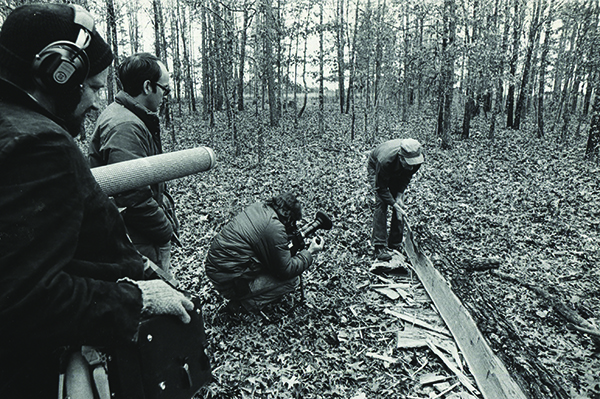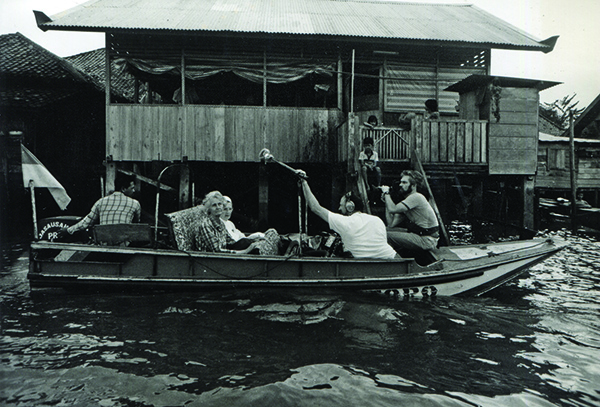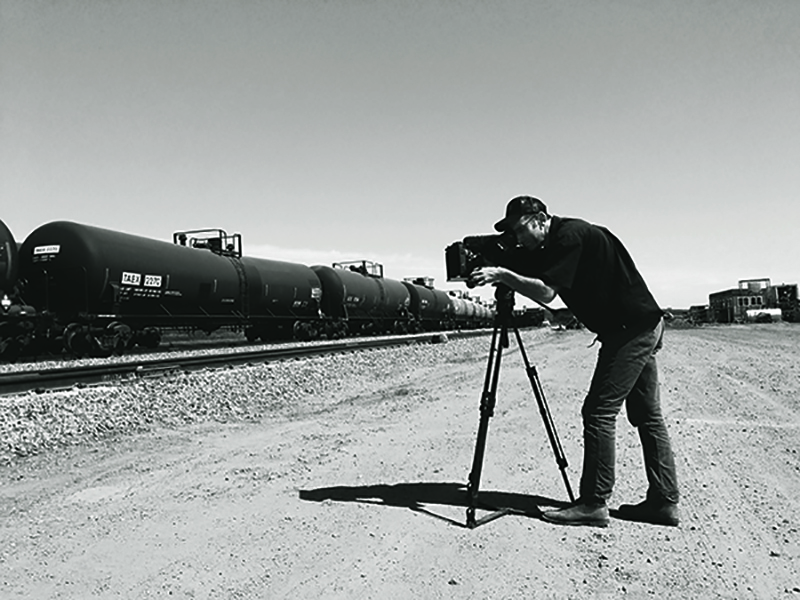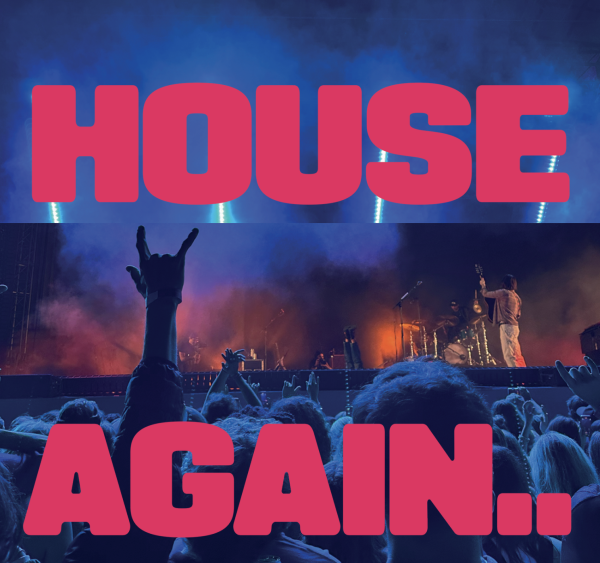Life Through a Lens
Focusing on real life rather than fabricated stories, documentaries offer audiences a new means of sharing information and facilitating discussion.
“Three, two, one…action!” A red-faced movie director screams into a megaphone at the top of their lungs. As soon as the word “action” echoes through the set, actors and actresses immediately take upon a character’s life that is anything but their own. They do so for the purpose of entertainment; for decades, people performing and pretending to be someone else in front of a camera has engaged audiences across the world. Within the past century, however, a rising interest in real life rather than a fabricated story has paved the way for the ascent of a fairly new format of entertainment: documentary.
Documentaries, not to be confused with reality TV shows, uncover people, stories or events through observations and interviews; they attempt to display unscripted situations, genuine conversations and actual events on screen. Through focusing in on one aspect of reality, documentaries provide filmmakers with the means to touch and educate communities on an endless range of topics.
“I think its ability to confront the times we live in and the profound questions of our age is unmatched,” Jesse Moss, documentary filmmaker and director of Netflix’s “The Family,” said.
For Moss and many others, the world is a playground of ideas, and the topic of a documentary can stem from anywhere. “Sometimes the idea comes from my partner; sometimes it comes from a friend or colleague who brings me a story or an idea,” Moss said. “Sometimes it comes from something I read in the newspaper.” Inspiration can be found where you least expect it from across different facets of society; filmmakers use their creativity to formulate a story with a unique angle. Long-time filmmaker and director Steve Longstreth similarly believes that the most impactful documentaries are derived from ideas that hit close to home. “To get a really good subject for a documentary, it’s kind of hard to just start from scratch; you have to be in the right place at the right time,” Longstreth said. “A lot of really important documentaries are personal.”
Because documentaries are such a personal means of real life story-telling, it is no surprise that sources play a pivotal role in the creation of these films. “I’ve always felt that the choice of the subject matter, whether it be a person or an event that’s taking place, can be the most important limiting factor in terms of whether it’s going to turn out well or not,” Longstreth said. After forming an idea, the next step is to reach out to such sources and determine whether something can be made of the idea. “You call up people and they are or are not interested in collaborating and they are or are not as interesting as [you expected],” Amanda McBaine, a fellow producer and director as well as Moss’s partner and collaborator, said. “It either opens or it doesn’t.”
One of the biggest challenges for filmmakers is seeking out sources. “Documentary is a little bit like a high-wire act,” Moss said. “Often taking that first step is the most important step because then you’re going. You’re on the wire and you kind of have to go forward. It’s much easier just to stay in safety, especially when no one is paying you to go make it.” Venturing into the unknown can be scary, especially with no safety net, and the first step filmmakers take is almost always the hardest. By pursuing an idea, filmmakers essentially take a leap of faith and trust their gut while exploring a possible subject for a new documentary.

“I think documentary really hinges on a collaboration between a subject and a filmmaker. You have to find people who are willing to meet you in the middle, people who are not uncomfortable in front of the camera,” Moss said. “I love that documentary, relationships can span years and that’s why [they] can be really profound.”
While most relationships in journalism are short-lived through the modes of newspaper and magazine articles, the connections formed through the making of a documentary are more intimate. Instead of just a quick conversation and interview about a person’s life or a current event, filmmakers take the role of a journalist one step further in efforts to gather quotes.
“[In] the films that I like to make, where you follow a person over a period of time, and often the most dramatic period of their lives, it’s a very powerful connection you form,” Moss said. “We think of journalism as kind of standing aside or on the outside, but what I like about documentaries is that you get close to people and they become friends, not just subjects.” The ample amount of time that filmmakers spend with their subjects fosters a deep relationship as they learn who their subject is on a personal level.
Along with the relationship between the director and their sources, documentaries have the power to harbor relationships between the filmmaker and their audience. “When you finish a film, you can share that film with your subjects [and] with an audience, and that becomes the next phase of a film’s life,” Moss said. “You’re talking, sharing and growing from that experience.” Documentaries are often shown in theaters and festivals with filmmakers such as Moss traveling along with their film, allowing for conversation about the documentary subject matter to be cultivated.
With the rising popularity of platforms such as Hulu and YouTube, however, filmmakers are no longer able to engage with their audience on the same level anymore. Sending films straight to these platforms is more efficient for reaching a wider audience. Many people of the developed world have instant access to streaming websites through various devices and are able to have new insight into the information displayed through such means. If the sole purpose of documentaries was to convey information, these platforms would be the best mode of transportation. However, these films are also meant to initiate discussion about important topics. “I also make work to share it, to get feedback, and that’s hard when it goes right to a platform; there’s no way people can talk back to me,” Moss said.

Before this technological era in which films can be played at the click of a button, finding a way to ensure that documentaries were viewed was a huge obstacle for filmmakers. “Going back a couple decades, just getting it out there and hoping that someone will get a chance to see it was difficult; the whole distribution aspect of it was very difficult,” Longstreth said. Although there are some drawbacks to the adoption of widespread platforms, it has seemed to allow more people to not only access the knowledge and lessons documentaries provide, but also break into the industry and make films themselves. “There are a lot more people making documentaries now than there used to be and there are more opportunities to have them seen since you have Netflix,” Longstreth said. “You can not only make a documentary now, but you can put it in a place where everybody in the world can see it.”
Regardless of what platform on which they are shared, there is no doubt that documentaries bring reality to viewers through a vision and artistry that is unlike any other source of entertainment.
As Moss said, “One of the things that’s missing in our culture is an ability to talk to people who are on the other side of the divide — politically, socially, culturally, geographically — and documentary, the camera [and] the tools of journalism are a ticket to go to those places, to meet those people who are different than you, to take those stories back and share them.”
Photos courtesy of Jesse Moss and Steve Longstreth

2019-2020 - Staff Writer
2020-2021 - Business Manager
Hear more about me!








